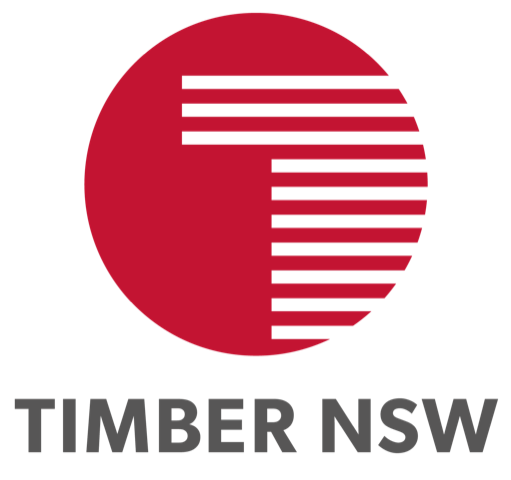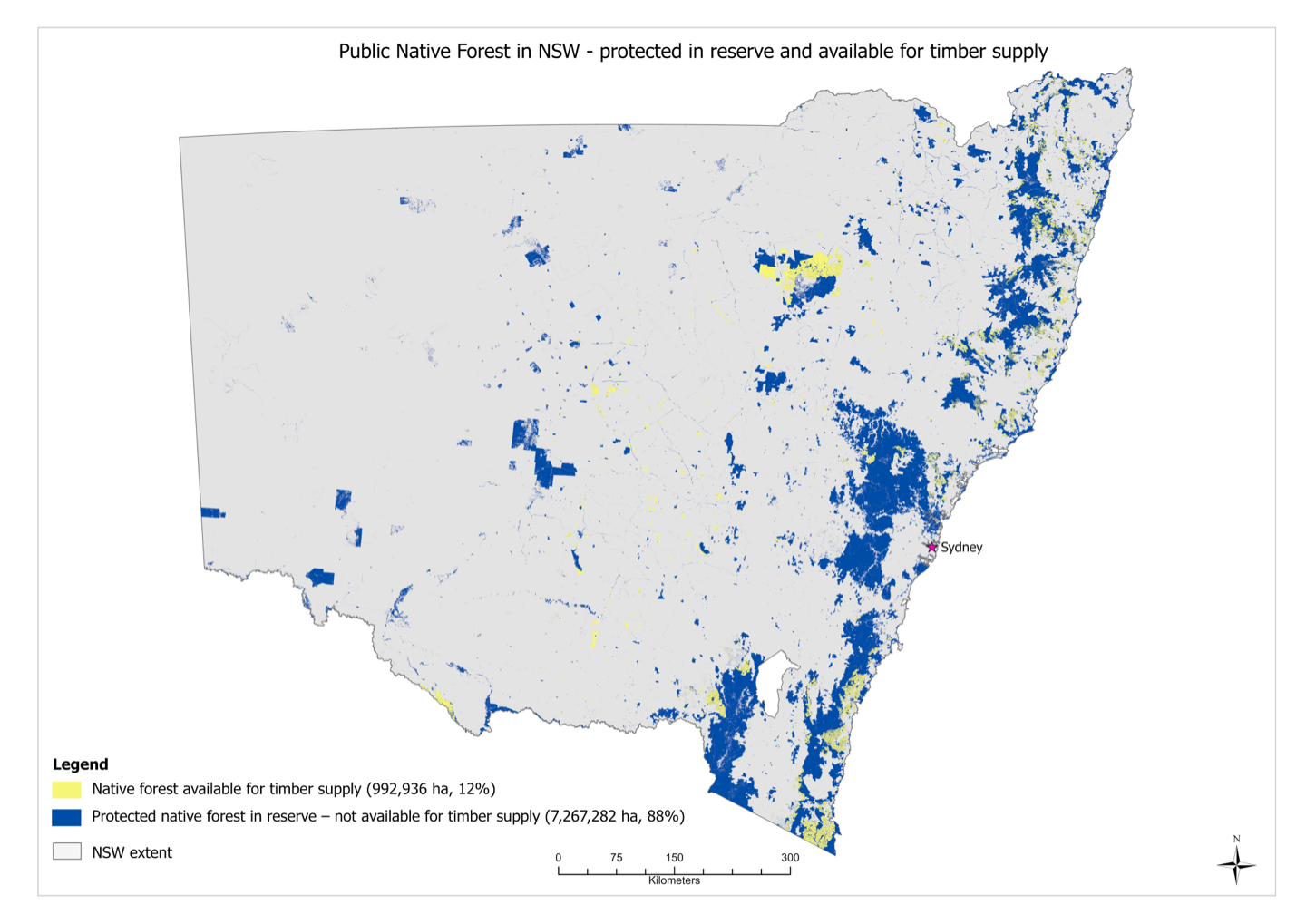
A resource for individuals interested in learning more about how NSW’s valuable timber resources are managed.
Campaign Supporting Sustainable Native Forestry
Harvest one. Grow one. Repeat.
How to count koalas with your ears.
Building houses secures our families. Building with timber secures our futures.
One big fact in timber harvesting is this one little number.
Some buildings are grown in 7 minutes.
Below is a link to the industry’s submission to the NSW Government to Retain Native Forestry. You may download this to read online or to save to your device and read later.
Also below are links to email templates that can be completed online and sent direct to the nominated ministers. You need to select the links related to the support category relevant to you i.e., ‘Timber Business’, ‘Allied Business’, or ‘Community Supporter’.
Please note that only the 5 most relevant Ministers are being approached. We would appreciate it if you would select each one to email as this will be more effective.
N.B. Owing to high level email security protocols for the Premier and the Treasurer, we are directing your emails to them to [email protected], which will allow us to print out and send your email support letters by post.
If you prefer to send your support email manually from your email service, then: –
- From the template links below, decide the ‘support letter type’ appropriate to you.
- Download the “Instructions” for email addresses and advice on how to obtain templates.
Once you receive the templates you can complete them i.e., one for each Minister and forward them individually to the ministers at the addresses provided in the Instructions.
Please ensure you send a copy of each email to [email protected] as this will enable us to determine support numbers.
Timber Business Supporter
Chris Minns:
https://timbernsw.tiny.us/CMTB
Daniel Mookhey:
https://timbernsw.tiny.us/DMTB
Penny Sharpe:
https://timbernsw.tiny.us/PSTB
Courtney Houssos:
https://timbernsw.tiny.us/CHTB
Tara Moriarty:
https://timbernsw.tiny.us/TMTB
Allied Business Supporter
Chris Minns: https://timbernsw.tiny.us/CMAB
Daniel Mookhey: https://timbernsw.tiny.us/DMAB
Penny Sharpe: https://timbernsw.tiny.us/PSAB
Courtney Houssos: https://timbernsw.tiny.us/CHAB
Tara Moriarty: https://timbernsw.tiny.us/TMAB
Community Supporter
Chris Minns:
https://timbernsw.tiny.us/CMTC
Daniel Mookhey:
https://timbernsw.tiny.us/DMTC
Penny Sharpe:
https://timbernsw.tiny.us/PSTC
Courtney Houssos:
https://timbernsw.tiny.us/CHTC
Tara Moriarty:
https://timbernsw.tiny.us/TMTC
Industry Submission to the New South Wales Government
Harvest one.
Grow one.
Repeat.
Fact: Timber is the ultimate renewable building material.
It’s a pretty simple process, and one that has helped keep our forests protected and sustainable for generations.
Every time a tree is harvested another is grown in its place.
Beyond that promising regrowth, wood products typically have a lower greenhouse footprint than alternative products. Timber requires comparatively small amounts of energy to produce and has the unique ability to store carbon for the term of its material life, further benefiting our environment.
It’s more than regeneration – it’s rejuvenation.
New research on urban planning shows increased productivity, better learning and faster healing in environments where we are surrounded by plants and timber.
This new focus is known as “biophilic design”, and with every tree harvested replaced with a new one, we can all share in the benefits for generations to come.
We’re dedicated to sustainable forest management and to bringing the benefits of timber into our lives as part of a long-term sustainable future for our forests and our environment.
One big fact in timber harvesting is this one little number.
Fact: Only 0.3% of NSW native forests are harvested annually.
Click the map image above for larger version
0.3% – that’s the little number we’re talking about.
That’s the total amount of NSW native forests harvested annually. And for every single tree harvested we grow another. This means that this 0.3% is automatically regrown every time.
For centuries, native forests in NSW have been of fundamental benefit to the environment and the community. They contain valuable habitat for threatened plants, animals and ecological communities, and a sustainable timber supply.
Part of this sustainability is restricting the amount of timber harvested to such a small portion.
NSW has one of the most highly regulated and sustainable forest industries in the world, working with government and industry bodies and the latest research to maintain and protect our forests.
Interestingly, timber in NSW is sourced from regrowth forest — areas that have already been harvested and regenerated a number of times over.
This renewable timber supply that serves the demands of our building industry is available because of our commitment to regeneration — regrowing the trees we harvest.
We’re dedicated to sustainable forest management and to bringing the benefits of timber into our lives as part of a long-term sustainable future for our forests and our environment.
Building houses secures our families. Building with timber secures our futures.
Fact: Timber is the ultimate renewable building material.
It’s part of the great Australian dream – owning your own home.
With the NSW population set to top 5.73 million this year, that dream will often be fulfilled with a new home. Over 38,000 homes were built in 2017 alone and the building boom is not expected to slow.
While the floorspace of our average suburban dwelling has increased three-fold over the last 50 years, the amount of timber used has decreased.
What has grown is our understanding of biophilia and the benefits of incorporating timber in urban design.
New research on urban planning shows increased productivity, better learning and faster healing in environments where we are surrounded by plants and timber.
This new focus is known as “biophilic design”, and with every harvested tree replaced with a new one, we can all share in the benefits for generations to come.
Wood products also typically have a lower greenhouse footprint than alternative products. Timber requires comparatively small amounts of energy to produce and has the unique ability to store carbon for the term of its material life, further benefiting our environment.
We’re dedicated to sustainable forest management and to bringing the benefits of timber into our lives as part of a long-term sustainable future for our forests and our environment.
How to count koalas with your ears.
Fact: New research reveals koala occupancy levels are not influenced by timber harvesting.
The iconic and adorable Aussie Koala – easy to love, surprisingly hard to count.
In NSW the koala is very widespread occupying an estimated 13 million hectares of woodland and forest habitat. But finding them has proven to be an elusive task over the past 30 years.
Dr Brad Law, principal research scientist at DPI has developed a major breakthrough in koala tracking to help hear the truth. He has spent seven years using acoustic sound recording to detect koalas in over 1.7 million hectares of mapped koala habitat.
In the 1990s, using the old method of spotlighting and searching for scats and scratch marks, koalas were detected in only 5% of sites. The new technology is finding koalas in up to 80% of sites.
The research has revealed that under strict regulations, timber harvesting is not effecting koala numbers or where they choose to live – be it in recently harvested or old growth forests.
It’s reassuring to know that sourcing timber sustainably is not having an adverse effect on koala populations whilst providing incredible
value to our lives and our future.
New research on urban planning shows increased productivity, better learning and faster healing in environments where we are surrounded by plants and timber. This new focus is known as “biophilic design”, and with every tree harvested replaced with a new one, we can all share in the benefits for generations to come.
We’re dedicated to the protection of our beloved koala population and to bringing the benefits of timber into our lives as part of a
long-term sustainable future for our forests and our environment.
Some buildings
are grown in
7 minutes.
Fact: Every time a tree is harvested from a regrowth forest, we grow another in its place.
It’s quite amazing to know how quickly forests grow. Every time a tree is harvested another is grown in its place.
With that kind of regeneration and the speed at which young trees grow, the volume of wood used in an average NSW residential build grows every 7 minutes in NSW forests. That’s a lot of regenerated timber and with trees regrowing over and over, timber really is the ultimate renewable.
The benefits of timber go further.
New research on urban planning shows increased productivity, better learning and faster healing in environments where we are surrounded by plants and timber.
This new focus is known as “biophilic design”, and with every tree harvested replaced with a new one, we can all share in the benefits for generations to come.
Wood products also typically have a lower greenhouse footprint than alternative products. Timber requires comparatively small amounts of energy to produce and has the unique ability to store carbon for the term of its material life, further benefiting our environment.
We’re dedicated to sustainable forest management and to bringing the benefits of timber into our lives as part of a long-term sustainable future for our forests and our environment.
Timber NSW was established in 1906 as the representative organisation of the timber and forest products industry in NSW.
Our mission is to work with our members, stakeholders and the broader industry to build an economically, environmentally and socially sustainable timber industry in New South Wales.
While Timber NSW exists principally to represent the NSW timber and forest products industry at parliamentary, political and senior government levels, it is also concerned with broader industry issues.
Timber NSW works in close cooperation with other timber industry bodies, such as our counterparts in other states, the Australian Forest Products Association, the Timber Development Association NSW, Forest & Wood Products Association, Australian Forest Contractors Association, Forestry Australia and Forest and Wood Communities Australia. We also regularly engage with community representatives, educators and conservation groups.
Timber NSW works on behalf of members in the following areas:
- Policy: We develop policy positions based on rigorous research of domestic and international best practice and consultation. We analyse and consult re state government policies to ensure our members’ views are represented at the highest level.
- Representation & Advocacy: Through our submissions, speeches, presentations and meetings with senior policymakers across all levels of government and to all political parties, we present a united voice and advocate on behalf of the industry.
- Member Services: We keep our members up to date and provide advice and assistance to our members on resource security and sustainability, industry regulation and environmental best practice. We organise regular events, forums and meetings in Sydney and across New South Wales.
- Communication & Education: We promote the industry, informing stakeholders and the community about the way the timber and forest products industry operates and the economic, environmental and social benefits of our work.
Our organisation
Our organisational structure enables member companies to contribute to overall industry policy and strategy, influence sector-specific issues and access services. Our members are drawn from every link in the industry’s value adding supply chain, providing a broad, industry-wide perspective.
The Timber NSW membership has regional representation on the North Coast, Riverina, Southern and Western areas of the state.
Comprising annually elected directors from across the regions, Timber NSW’s Board of Directors meets regularly to determine policy, establish priorities and formulate strategy.
Contact us
Timber NSW Ltd
130 Mallett Street,
Camperdown NSW 2050
Phone: +61 2 9279 2344
Email: [email protected]


